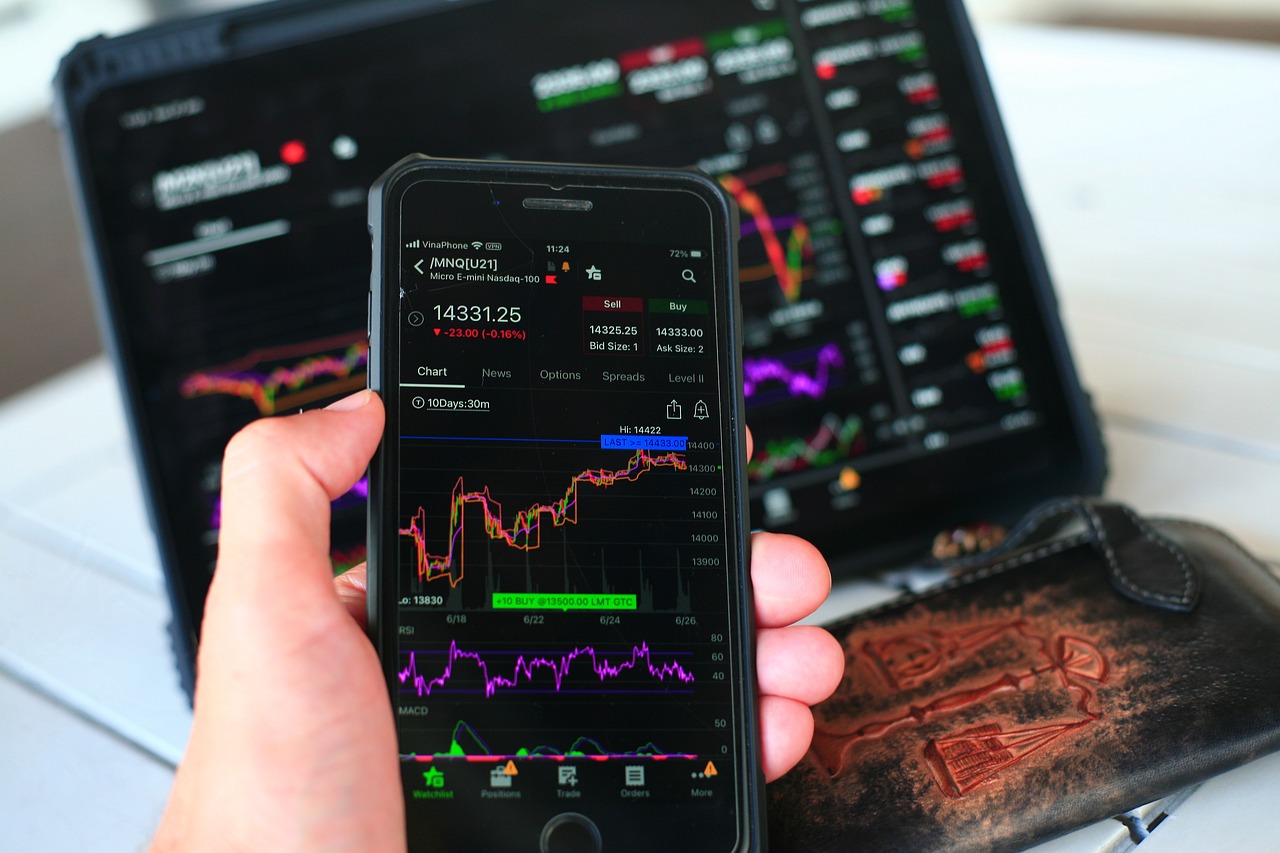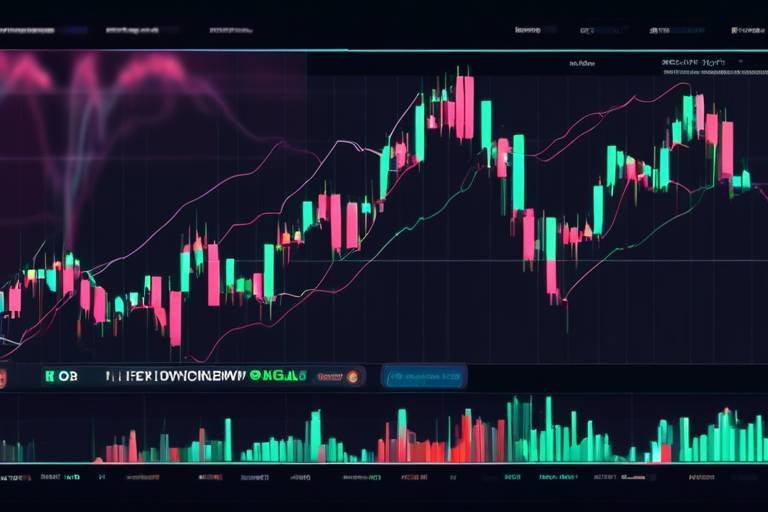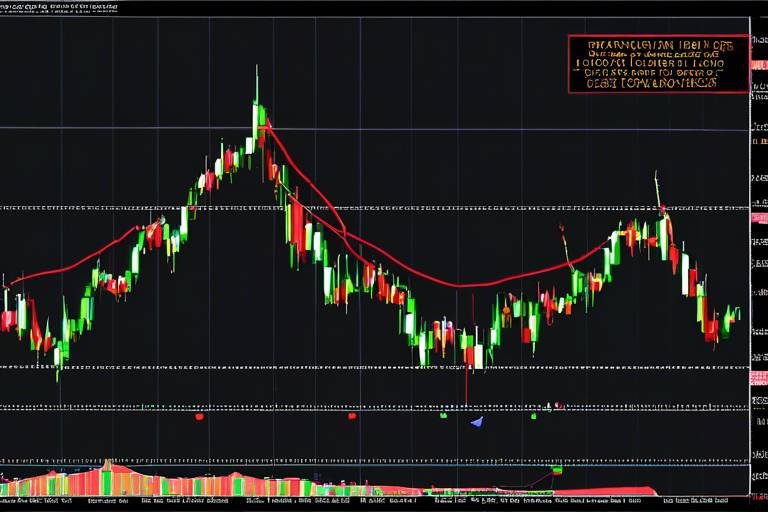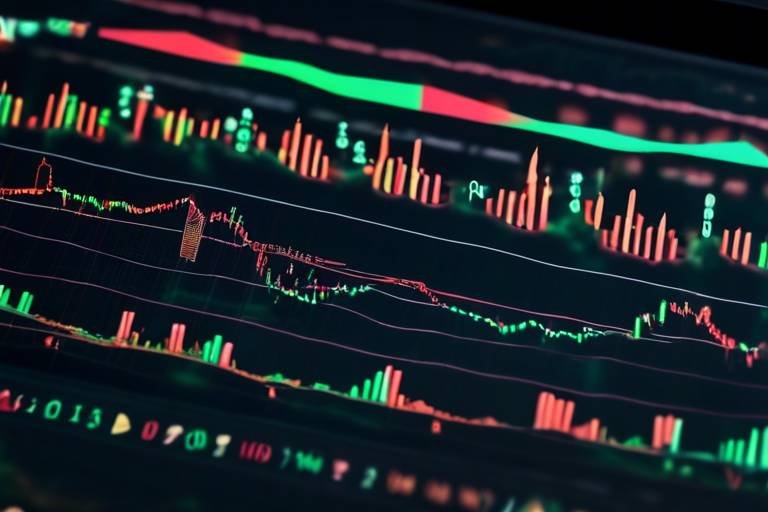How to Optimize Trading Performance with Technical Analysis
In the fast-paced world of trading, where every second counts and market conditions can shift in the blink of an eye, optimizing your trading performance is crucial for success. Technical analysis serves as a powerful tool that allows traders to make informed decisions based on historical price movements and market trends. But what exactly is technical analysis, and how can it help you enhance your trading game? In this article, we will dive deep into the techniques and strategies that can elevate your trading performance, focusing on chart patterns, key indicators, and the psychology behind trading.
Technical analysis is a method used to evaluate securities by analyzing statistics generated by market activity. It relies on historical price data and trading volume to forecast future price movements. The principles of technical analysis are built on the belief that market prices reflect all available information and that price movements tend to follow trends. This means that by studying past price patterns, traders can make educated guesses about where prices are likely to head next.
One of the key advantages of technical analysis is its ability to provide insights into market psychology. Traders often react similarly to certain price movements, creating patterns that can be identified and leveraged. By understanding these patterns, traders can position themselves advantageously, increasing their chances of profitability. Whether you're a seasoned trader or just starting out, grasping the fundamentals of technical analysis is essential for navigating the complexities of the financial markets.
Recognizing chart patterns is essential for predicting future price movements. These patterns can signal potential reversals or continuations in the market, allowing traders to make timely decisions. Some common chart patterns include:
- Head and Shoulders
- Triangles
- Flags
Understanding these patterns can significantly enhance your ability to forecast market trends and make informed trading decisions.
The head and shoulders pattern is one of the most reliable indicators of a reversal trend. It consists of three peaks: a higher peak (the head) between two lower peaks (the shoulders). This formation typically indicates that the market is transitioning from a bullish to a bearish trend. Traders can use this pattern to identify potential sell signals, allowing them to exit positions before a significant downturn occurs.
To effectively utilize the head and shoulders pattern, traders should look for confirmation through volume and other indicators. A decrease in volume as the pattern forms can signify weakening bullish momentum, further validating the potential for a downward shift.
Triangles are another essential chart pattern that represents consolidation before a breakout. There are three main types of triangles:
- Ascending Triangles - Generally considered bullish, these patterns form when the price consistently makes higher lows while facing resistance at a horizontal line.
- Descending Triangles - Typically bearish, these patterns occur when the price makes lower highs while finding support at a horizontal line.
- Symmetrical Triangles - These patterns can indicate either a bullish or bearish breakout, as the price moves within converging trendlines.
Understanding how to identify and interpret these triangles can provide traders with valuable insights into potential breakout points and market direction.
Technical indicators are vital tools for traders, providing additional context and confirmation for trading decisions. Some of the most popular indicators include:
- Moving Averages
- Relative Strength Index (RSI)
- Moving Average Convergence Divergence (MACD)
These indicators can help traders identify trends, measure momentum, and determine overbought or oversold conditions in the market.
Moving averages help smooth price data to identify trends over time. They can be categorized into two main types: simple moving averages (SMA) and exponential moving averages (EMA). While SMAs calculate the average price over a set period, EMAs give more weight to recent prices, making them more responsive to price changes.
Traders often use moving averages in conjunction with other indicators to confirm trends and potential reversal points. For instance, when the price crosses above a moving average, it may signal a bullish trend, while a cross below could indicate a bearish trend.
The RSI measures the speed and change of price movements, providing insights into overbought or oversold conditions in the market. Ranging from 0 to 100, an RSI above 70 typically indicates that a security is overbought, while an RSI below 30 suggests it is oversold. Traders can use these levels to identify potential reversal points or confirm existing trends.
By incorporating the RSI into their trading strategies, traders can enhance their decision-making process and increase their chances of success.
Effective risk management is crucial for trading success. Without a solid risk management strategy, even the most skilled traders can suffer significant losses. Here are some key techniques to minimize losses and protect your capital:
- Set Stop-Loss Orders: Always define your exit strategy before entering a trade.
- Diversify Your Portfolio: Spread your investments across different asset classes to mitigate risk.
- Use Position Sizing: Determine the appropriate amount to invest in each trade based on your overall capital.
By implementing these techniques, traders can create a safety net that allows them to navigate the unpredictable nature of the markets.
Understanding market psychology can significantly impact trading performance. Emotional discipline is vital, as traders often face psychological traps that can lead to impulsive decisions. Common pitfalls include fear of missing out (FOMO), overconfidence, and loss aversion. By recognizing these emotional triggers, traders can develop strategies to maintain a clear mindset and stick to their trading plans.
A well-structured trading plan is essential for consistent performance. Key components of a successful trading strategy include:
- Clear Goals: Define your financial objectives and risk tolerance.
- Entry and Exit Strategies: Outline your criteria for entering and exiting trades.
- Review and Adaptation: Regularly assess your trading performance and adjust your strategy as needed.
By developing a comprehensive trading plan, traders can navigate the complexities of the market with confidence and purpose.
1. What is technical analysis?
Technical analysis is a method used to evaluate securities by analyzing statistics generated by market activity, primarily focusing on price movements and trading volume.
2. How can I use chart patterns to improve my trading?
By recognizing chart patterns, traders can predict future price movements and make informed decisions about when to enter or exit trades.
3. What are the most important technical indicators?
Some of the most important technical indicators include moving averages, RSI, and MACD, which help traders identify trends and market conditions.
4. Why is risk management important in trading?
Risk management is crucial to protect your capital and minimize losses, ensuring long-term success in trading.
5. How can I develop a trading plan?
A trading plan should include clear goals, entry and exit strategies, and regular performance reviews to adapt to changing market conditions.

Understanding Technical Analysis
When it comes to trading, technical analysis is like having a secret weapon in your arsenal. Imagine you're a detective, sifting through clues to piece together a story about price movements. That's exactly what technical analysis allows traders to do—it helps them evaluate securities by examining the statistics generated from market activity. This method relies heavily on historical price data and trading volume, offering insights that can guide decision-making in the often volatile world of trading.
The principles of technical analysis are rooted in the belief that all relevant information is already reflected in the price of a security. Traders who embrace this approach focus on charts and indicators to forecast future price movements. It's not just about what the price is today; it's about understanding the trends that have shaped it and predicting where it might go next. The beauty of technical analysis lies in its ability to simplify complex market behavior into understandable patterns and signals.
One of the core tenets of technical analysis is that price movements are not random; they are influenced by the collective behavior of market participants. This means that human psychology plays a significant role in trading. Traders often react in similar ways to certain price levels, leading to predictable patterns. By recognizing these patterns, traders can anticipate potential market movements and make informed decisions.
Moreover, technical analysis is not just for day traders or short-term investors. It's a versatile tool that can be applied across different time frames, whether you're looking at minute-by-minute charts or long-term trends. This flexibility makes it a valuable skill for anyone interested in the financial markets.
To sum it up, understanding technical analysis is crucial for anyone serious about trading. It empowers traders to make data-driven decisions rather than relying solely on intuition or news. With the right knowledge and tools, you can navigate the markets with greater confidence and precision. So, are you ready to dive deeper into the world of technical analysis and unlock its secrets?
In the following sections, we will explore key chart patterns and important technical indicators that can further enhance your trading performance. But first, let's take a moment to address some common questions that often arise in the realm of technical analysis.
- What is the primary goal of technical analysis?
The main goal is to forecast future price movements based on historical data and market behavior. - Can technical analysis be used for long-term investing?
Yes, while it's often associated with short-term trading, technical analysis can also be applied to long-term investment strategies. - What are some common mistakes beginners make in technical analysis?
Beginners often rely too heavily on one indicator or pattern without considering the broader market context.

Key Chart Patterns
Recognizing chart patterns is essential for predicting future price movements in the world of trading. These patterns serve as visual representations of market sentiment and can provide traders with crucial insights into potential price actions. By understanding these formations, traders can make more informed decisions and enhance their overall performance. In this section, we will discuss some of the most common chart patterns, including the head and shoulders, triangles, and flags. Each of these patterns has its unique characteristics and implications, making them invaluable tools for traders.
The head and shoulders pattern is one of the most recognized reversal patterns in technical analysis. It typically indicates a change in trend direction, signaling that the market may be transitioning from a bullish phase to a bearish one. This pattern consists of three peaks: the first peak (left shoulder), the second peak (head), and the third peak (right shoulder). The left shoulder is formed after a price increase, followed by a higher peak (the head), and then a decline that forms the right shoulder, which is generally lower than the head but similar to the left shoulder. Traders often look for confirmation through a breakout below the neckline, which is drawn by connecting the lows of the left and right shoulders. This breakout can provide a strong signal for entering a short position.
Triangles are another significant chart pattern that represents periods of consolidation before a breakout occurs. These patterns can be classified into three types: ascending triangles, descending triangles, and symmetrical triangles. Each type has its unique implications for traders:
- Ascending Triangles: Characterized by a flat upper trendline and an upward-sloping lower trendline, this pattern suggests that buyers are becoming increasingly aggressive. A breakout above the upper trendline often signals a continuation of the bullish trend.
- Descending Triangles: This pattern features a flat lower trendline and a downward-sloping upper trendline, indicating that sellers are gaining control. A breakout below the lower trendline can signal a continuation of the bearish trend.
- Symmetrical Triangles: Formed by converging trendlines, this pattern indicates indecision in the market. The breakout direction can be either bullish or bearish, making it essential for traders to watch for confirmation before entering a position.
Understanding these key chart patterns is vital for any trader looking to enhance their trading performance. By recognizing these formations, traders can better anticipate market movements and make informed decisions that align with their trading strategies.
1. What is the significance of chart patterns in trading?
Chart patterns help traders identify potential price movements and market sentiment. Recognizing these patterns can lead to more informed trading decisions.
2. How can I identify a head and shoulders pattern?
Look for three peaks: the left shoulder, the head, and the right shoulder. The neckline connects the lows of the left and right shoulders. A breakout below the neckline confirms the pattern.
3. Are triangle patterns reliable indicators?
Yes, triangle patterns can indicate potential breakouts, but they require confirmation. Traders should watch for price action at the trendlines to determine the breakout direction.
4. Can I use multiple chart patterns simultaneously?
Absolutely! Many traders use multiple patterns and indicators together to strengthen their analysis and improve their trading strategies.

Head and Shoulders
The head and shoulders pattern is one of the most recognized and powerful indicators of a potential reversal in the financial markets. It typically appears after a strong uptrend and signals that the momentum is shifting. Imagine climbing a mountain; you reach the peak (the head) and then start to descend, realizing that the climb is over. This pattern consists of three peaks: the left shoulder, the head, and the right shoulder. Each peak represents a price high, with the head being the highest point. The formation may look simple, but understanding its implications can greatly enhance your trading decisions.
To visualize this, consider the following breakdown of the pattern:
| Peak | Description |
|---|---|
| Left Shoulder | This is formed after a price increase, followed by a decline. It indicates an initial sign of weakness. |
| Head | The highest peak, representing a strong buying phase before the market begins to show signs of exhaustion. |
| Right Shoulder | This forms after the head and is typically lower than the head, confirming that the upward momentum is fading. |
Once you spot this pattern, it’s crucial to watch for the neckline, which is the support level that connects the lows of the left shoulder and the head. A break below this neckline validates the pattern, indicating that a significant price drop may follow. Here’s how traders often use the head and shoulders pattern:
- Entry Point: Traders typically enter a short position once the price breaks below the neckline.
- Target Price: The expected price drop can be estimated by measuring the distance from the head to the neckline and projecting that distance downwards from the breakout point.
- Stop Loss: It's wise to place a stop-loss order above the right shoulder to minimize potential losses if the trade doesn't go as planned.
Understanding the head and shoulders pattern is not just about recognizing the peaks; it’s about grasping the psychological battle between buyers and sellers. When traders see this formation, they often anticipate a shift in market sentiment, which can lead to increased selling pressure. This anticipation can create a self-fulfilling prophecy, where traders act on the pattern, causing the price to move as predicted.
In summary, the head and shoulders pattern is more than just a visual representation; it’s a powerful tool that encapsulates market psychology and trader behavior. By learning to recognize this pattern and understanding its implications, you can make more informed trading decisions and potentially enhance your overall trading performance.

Triangles
Triangles are fascinating formations in the world of technical analysis, representing periods of consolidation before a potential breakout. They come in three primary types: ascending, descending, and symmetrical triangles. Each type holds its unique implications for traders, making them essential tools in predicting future price movements. Think of triangles as a tightly coiled spring; the tighter the coil, the more explosive the potential release of energy in the form of price movement. When you spot a triangle on a chart, it’s like finding a treasure map that hints at where the next big move might occur.
An ascending triangle is characterized by a series of higher lows and a flat upper resistance level. This pattern suggests that buyers are gaining strength and could eventually push the price above the resistance line. On the other hand, a descending triangle shows a series of lower highs and a flat lower support level, indicating that sellers are in control, and a breakdown below support could be imminent. Lastly, the symmetrical triangle forms when the price moves between converging trendlines, indicating indecision in the market. It can break out in either direction, making it a bit of a wild card.
Understanding the implications of these triangles is crucial for any trader looking to enhance their performance. Here’s a quick breakdown of how each triangle can be interpreted:
| Type of Triangle | Formation Characteristics | Implication |
|---|---|---|
| Ascending Triangle | Higher lows, flat resistance | Potential bullish breakout |
| Descending Triangle | Lower highs, flat support | Potential bearish breakout |
| Symmetrical Triangle | Converging trendlines | Indecision; breakout can occur in either direction |
When trading triangles, timing is everything. Traders often look for a breakout once the price approaches the apex of the triangle, which is where the tension builds up. This can be a thrilling moment, as it often results in significant price movement. However, it’s essential to wait for confirmation—such as a close above resistance or below support—before entering a trade. This helps to avoid false breakouts, which can lead to unexpected losses.
In summary, triangles are not just shapes on a chart; they are powerful indicators of market sentiment and potential price action. By mastering how to identify and interpret these patterns, traders can enhance their trading strategies and improve their chances of success in the ever-changing market landscape.

Important Technical Indicators
When it comes to trading, understanding technical indicators is like having a compass in the wilderness. These indicators help traders make informed decisions by providing insights into market trends and potential price movements. They are derived from historical price data and are crucial for both day traders and long-term investors alike. Let’s dive into some of the most popular technical indicators that can enhance your trading strategy.
One of the most widely used indicators is the Moving Average (MA). This tool smooths out price fluctuations by averaging prices over a specific period. There are different types of moving averages, including the Simple Moving Average (SMA) and the Exponential Moving Average (EMA). The EMA gives more weight to recent prices, making it more responsive to new information. Traders often use moving averages to identify trends; for instance, when the price crosses above the moving average, it may signal a potential upward trend. Conversely, a price drop below the moving average could indicate a downward trend.
| Type of Moving Average | Description | Application |
|---|---|---|
| Simple Moving Average (SMA) | Averages prices over a specified period. | Used to identify overall trends. |
| Exponential Moving Average (EMA) | Gives more weight to recent prices. | Useful for short-term trading. |
Another essential indicator is the Relative Strength Index (RSI). This momentum oscillator ranges from 0 to 100 and measures the speed and change of price movements. Typically, an RSI above 70 suggests that a security is overbought, while an RSI below 30 indicates it is oversold. Traders can use these levels to identify potential reversal points. For example, if a stock has an RSI of 75, it might be wise to consider selling or shorting, as it could be due for a correction.
Next up is the Moving Average Convergence Divergence (MACD). This indicator consists of two moving averages and helps traders identify changes in momentum. The MACD line is calculated by subtracting the 26-period EMA from the 12-period EMA. The result is then plotted alongside a signal line, which is the 9-period EMA of the MACD line. When the MACD line crosses above the signal line, it’s often seen as a bullish signal, while a cross below can indicate bearish momentum. Understanding how to interpret MACD signals can provide traders with a clearer picture of market dynamics.
While these indicators are powerful, they are not infallible. It’s crucial to combine them with other forms of analysis and risk management techniques. Remember, no single indicator can predict market movements with absolute certainty. Therefore, using a combination of indicators can provide a more comprehensive view. For instance, you might use the RSI to gauge overbought or oversold conditions while simultaneously analyzing moving averages to confirm trends.
In summary, mastering these important technical indicators can significantly improve your trading performance. By understanding how they work and applying them effectively, you can navigate the complexities of the market with greater confidence. As you integrate these tools into your trading strategy, always keep in mind the importance of risk management and emotional discipline.
- What are technical indicators?
Technical indicators are mathematical calculations based on historical price and volume data, used to forecast future price movements. - How do I choose the right indicators for my trading strategy?
It depends on your trading style. Short-term traders might prefer momentum indicators like the RSI, while long-term investors may focus on trend indicators like moving averages. - Can I rely solely on technical indicators for trading?
No, it's essential to combine technical analysis with fundamental analysis and risk management strategies for more effective trading.

Moving Averages
Moving averages are a fundamental tool in the arsenal of any trader looking to enhance their performance and make informed decisions. At its core, a moving average is a statistical calculation that helps smooth out price data by creating a constantly updated average price. This technique is particularly useful in identifying trends over specific periods, allowing traders to see beyond the noise of daily price fluctuations. Imagine trying to find a clear path in a dense forest; moving averages act like a map, guiding you through the chaos to reveal the underlying trend.
There are several types of moving averages, each serving a unique purpose in trading strategies. The most common include the Simple Moving Average (SMA) and the Exponential Moving Average (EMA). The SMA calculates the average price over a specified number of periods, providing a straightforward view of the trend. On the other hand, the EMA gives more weight to recent prices, making it more responsive to new information. This responsiveness can be crucial during volatile market conditions, where timely decisions can mean the difference between profit and loss.
To illustrate the differences and applications of these moving averages, consider the following table:
| Type of Moving Average | Formula | Best Used For |
|---|---|---|
| Simple Moving Average (SMA) | (P1 + P2 + ... + Pn) / n | Identifying long-term trends |
| Exponential Moving Average (EMA) | Current Price x (α) + Previous EMA x (1 - α) | Capturing short-term price movements |
When traders use moving averages, they often look for crossovers as signals for potential trades. For instance, a bullish signal occurs when a shorter-term moving average crosses above a longer-term moving average, indicating a possible upward trend. Conversely, a bearish signal arises when the shorter-term moving average crosses below the longer-term average. This concept is often referred to as the "Golden Cross" for bullish signals and the "Death Cross" for bearish signals. These terms may sound dramatic, but they highlight the significance of these patterns in trading decisions.
In addition to crossovers, moving averages can also be used to identify support and resistance levels. When the price approaches a moving average from above, it may act as a support level, while approaching from below may indicate a resistance level. This dual functionality makes moving averages a versatile tool in any trader's toolkit.
However, it's essential to remember that moving averages are lagging indicators, meaning they are based on past price data. While they provide valuable insights, relying solely on them can lead to missed opportunities or false signals, especially in rapidly changing markets. Therefore, combining moving averages with other technical indicators and analysis methods can enhance their effectiveness and lead to more robust trading strategies.
In conclusion, moving averages are not just numbers on a chart; they are powerful indicators that can help traders navigate the complexities of the financial markets. By understanding their types, applications, and limitations, traders can make more informed decisions and improve their trading performance. So, the next time you analyze a price chart, remember to let moving averages guide you through the market's ups and downs.

Relative Strength Index (RSI)
The is a powerful momentum oscillator that measures the speed and change of price movements. Developed by J. Welles Wilder, this indicator ranges from 0 to 100 and is primarily used to identify overbought or oversold conditions in a market. But how exactly does it work, and why should traders incorporate it into their strategies? Let's dive deeper into its mechanics and applications.
To calculate the RSI, you first need to determine the average gains and average losses over a specified period, typically 14 days. The formula for RSI is as follows:
RSI 100 - (100 / (1 + RS)) Where RS Average Gain / Average Loss
Once calculated, the RSI can provide valuable insights. Generally, an RSI above 70 indicates that a security is overbought, suggesting that it might be due for a price correction. Conversely, an RSI below 30 suggests that a security is oversold, which may indicate a potential rebound. Traders often use these thresholds to make informed decisions about entering or exiting trades.
But here’s where it gets interesting! The RSI is not just a standalone indicator; it can be combined with other technical tools to enhance its effectiveness. For example, traders might look for divergences between the RSI and price action. If prices are making new highs, but the RSI is failing to reach new highs, this could signal a potential reversal. Similarly, if prices are making new lows while the RSI is making higher lows, it could indicate a bullish reversal.
Moreover, understanding the context of the market is crucial. For instance, in a strong trending market, the RSI may remain overbought or oversold for extended periods. This is why many traders prefer to use the RSI in conjunction with other indicators, such as moving averages or trend lines, to confirm signals and avoid false breakouts.
In summary, the RSI is a versatile tool that can help traders gauge momentum and market sentiment. By understanding its calculations and implications, traders can make more informed decisions and enhance their trading strategies. Remember, while the RSI can be a great ally, it’s essential to use it as part of a broader trading plan that includes risk management and psychological discipline.
- What is the best RSI setting? The standard setting is 14 periods, but some traders adjust it based on their trading style and the timeframe they are using.
- Can RSI be used for all asset classes? Yes, RSI is applicable to stocks, forex, commodities, and cryptocurrencies, making it a versatile tool for various markets.
- How do I interpret RSI divergences? A bullish divergence occurs when the price makes lower lows while the RSI makes higher lows, suggesting a potential reversal to the upside. A bearish divergence is the opposite.

Risk Management Techniques
When it comes to trading, the thrill of the chase can often overshadow the crucial aspect of risk management. Think of it like driving a fast car; you can enjoy the speed, but without knowing how to control it, you might end up in a ditch. Just as you wouldn’t want to crash your car, you don’t want to crash your trading account. The essence of risk management is to ensure that your trading journey is as smooth and profitable as possible, minimizing potential losses while maximizing gains.
One of the most effective techniques in risk management is the use of stop-loss orders. A stop-loss order is like a safety net that automatically sells your position when it reaches a certain price. This way, you can protect yourself from significant losses without having to monitor the market constantly. Imagine you’re in a boat, and you have a life jacket; the stop-loss is your life jacket, keeping you afloat when the waters get rough.
Another vital aspect of risk management is position sizing. This involves determining how much of your capital you are willing to risk on a single trade. A common rule of thumb is to risk no more than 1% to 2% of your trading capital on any one trade. This strategy prevents you from losing a significant portion of your account on a single bad trade. For instance, if you have a trading account of $10,000, risking 1% means your maximum loss on a trade should be limited to $100. It’s like having a budget for a night out; you can have fun, but you don’t want to overspend and end up broke!
Additionally, diversifying your portfolio is a fundamental technique to spread risk. By investing in different assets, you reduce the impact of a poor-performing investment on your overall portfolio. Think of it as not putting all your eggs in one basket. If one investment falters, the others can help cushion the blow. Here’s a simple table to illustrate how diversification works:
| Asset Class | Investment Amount | Potential Risk |
|---|---|---|
| Stocks | $4,000 | High |
| Bonds | $3,000 | Medium |
| Real Estate | $2,000 | Low |
| Commodities | $1,000 | Medium |
Lastly, let’s not forget about the importance of maintaining an emotional balance. Trading can be a rollercoaster of emotions, and it’s easy to let fear and greed dictate your decisions. Developing emotional discipline is key to sticking to your trading plan, even when the market throws curveballs. It's like being a tightrope walker; one misstep due to emotional instability can lead to a fall. Remind yourself to stay grounded and follow your strategies, no matter how tempting it is to deviate.
- What is the most important aspect of risk management?
Understanding your risk tolerance and implementing stop-loss orders is crucial. - How can I effectively diversify my portfolio?
Invest in a mix of asset classes, such as stocks, bonds, and commodities, to spread risk. - What is position sizing?
Position sizing refers to determining how much of your capital to risk on a single trade, typically limited to 1-2%.

Psychology of Trading
When it comes to trading, understanding the is just as important as mastering technical analysis. Why? Because the market is not just a collection of charts and numbers; it’s a dynamic environment influenced by human emotions, decisions, and behaviors. Think of trading as a game of chess, where every move is dictated not just by strategy but also by the psychological state of the players involved. Traders often face emotional challenges that can lead to impulsive decisions, which may ultimately affect their trading performance.
One of the most significant psychological traps traders encounter is fear. Fear can manifest in various forms, such as fear of missing out (FOMO), fear of losing money, or even fear of making the wrong decision. This fear can paralyze a trader, causing them to hesitate when they should act or to make rash decisions that lead to losses. On the flip side, there’s also greed, which can drive traders to take excessive risks in pursuit of higher returns. Balancing these emotions is crucial, and it requires a deep understanding of oneself.
To navigate the psychological landscape of trading, traders can employ several strategies:
- Emotional Discipline: This is the cornerstone of successful trading. Developing emotional discipline means recognizing your feelings and understanding how they impact your decisions. Techniques like mindfulness and meditation can help maintain focus and clarity.
- Setting Realistic Goals: Having clear, achievable goals can help mitigate feelings of anxiety. Instead of aiming for astronomical profits, focus on consistent, smaller gains.
- Journaling: Keeping a trading journal can provide insights into your emotional triggers and decision-making patterns. By documenting your trades, you can identify recurring mistakes and learn from them.
Moreover, the concept of loss aversion plays a critical role in trading psychology. Loss aversion refers to the tendency to prefer avoiding losses rather than acquiring equivalent gains. This can lead traders to hold onto losing positions for too long, hoping to break even instead of cutting their losses. Understanding this bias can help traders make more rational decisions and prevent emotional attachments to trades.
Another important aspect is the bandwagon effect, where traders follow the crowd, often leading to herd behavior. This can create bubbles or crashes, as decisions are driven by collective emotion rather than sound analysis. Recognizing when you’re falling into this trap is vital for maintaining an independent trading strategy.
In summary, mastering the psychology of trading requires a combination of self-awareness, discipline, and strategic planning. By understanding how emotions influence decisions and implementing strategies to manage these feelings, traders can enhance their performance and increase their chances of success in the market.
1. What is the most common psychological trap in trading?
The most common psychological trap is fear, which can lead to hesitation or impulsive decisions. Greed is another significant factor that can cause traders to take unnecessary risks.
2. How can I improve my emotional discipline while trading?
Improving emotional discipline can be achieved through techniques like mindfulness, setting realistic goals, and maintaining a trading journal to track your emotions and decisions.
3. What is loss aversion, and how does it affect trading?
Loss aversion is the tendency to prefer avoiding losses over acquiring equivalent gains. It can lead traders to hold onto losing positions too long instead of cutting their losses.
4. How does the bandwagon effect influence trading decisions?
The bandwagon effect occurs when traders follow the crowd, leading to herd behavior. This can create market bubbles or crashes, as decisions are based on collective emotion rather than analysis.

Developing a Trading Plan
Creating a solid trading plan is akin to drafting a roadmap for your financial journey. It provides a clear direction and helps you navigate the often tumultuous waters of the trading world. Without a plan, you might find yourself lost in the chaos, making impulsive decisions based on emotions rather than logic. So, what should a robust trading plan include? Let’s break it down.
First and foremost, a trading plan should define your trading goals. Are you looking to achieve short-term gains, or are you in it for the long haul? Understanding your objectives will help you tailor your strategies accordingly. For instance, if your goal is to build wealth over time, you might focus on long-term investments rather than quick trades. Setting clear, measurable goals will keep you motivated and provide a benchmark to evaluate your performance.
Next, you need to establish risk management rules. This is crucial because, in trading, the only certainty is uncertainty. You should decide how much capital you are willing to risk on each trade and set stop-loss orders to protect your investments. A common rule is to risk no more than 1-2% of your trading capital on a single trade. By adhering to these rules, you can prevent significant losses that could derail your trading journey.
Another essential component is your trading strategy. This involves the methods you will use to enter and exit trades. Will you rely on technical analysis, fundamental analysis, or a combination of both? Perhaps you’ll utilize specific indicators or chart patterns to inform your decisions. Whatever your approach, ensure it aligns with your goals and risk tolerance. Remember, a well-defined strategy helps eliminate emotional trading, allowing you to make decisions based on data and analysis.
Additionally, consider incorporating a trading journal into your plan. This is where you’ll document your trades, strategies, outcomes, and the emotions you experienced throughout the process. Reflecting on your trading history can provide valuable insights into your performance and help you identify areas for improvement. Over time, your journal will become a powerful tool for learning and growth.
To summarize, here are the key components of a trading plan:
- Trading Goals: Define what you want to achieve.
- Risk Management Rules: Set limits on how much you will risk.
- Trading Strategy: Decide on your approach to entering and exiting trades.
- Trading Journal: Keep track of your trades and emotions.
Remember, developing a trading plan is not a one-time event. It’s an evolving document that should be reviewed and adjusted regularly to reflect changes in the market and your personal circumstances. As you gain more experience and insights, don’t hesitate to refine your strategies and goals.
In conclusion, a well-structured trading plan is your best ally in the quest for trading success. It provides clarity, discipline, and a framework for making informed decisions. So, take the time to develop your plan, stick to it, and watch as your trading performance improves.
Here are some common questions traders have regarding the development of a trading plan:
- How often should I review my trading plan? It’s advisable to review your trading plan at least once a month or after significant market events.
- Can I change my trading strategy? Absolutely! Your trading strategy should evolve based on your experiences and market conditions.
- What if I don't meet my trading goals? Don't be discouraged. Use it as a learning opportunity to adjust your plan and strategies.
Frequently Asked Questions
- What is technical analysis in trading?
Technical analysis is a method used to evaluate securities by analyzing statistical data generated from market activity, such as price movements and trading volume. It helps traders predict future price movements based on historical data and chart patterns.
- How do I identify key chart patterns?
Key chart patterns can be identified by closely observing price movements on charts. Patterns like head and shoulders, triangles, and flags emerge from price consolidations and trends. Learning to recognize these patterns can significantly enhance your trading decisions.
- What are the most important technical indicators?
Some of the most important technical indicators include moving averages, Relative Strength Index (RSI), and Moving Average Convergence Divergence (MACD). These indicators help traders assess market trends, momentum, and potential reversal points.
- How do moving averages work?
Moving averages smooth out price data to help identify trends over a specific period. They come in various forms, such as simple moving averages (SMA) and exponential moving averages (EMA), each serving different trading strategies and timeframes.
- What is the purpose of the Relative Strength Index (RSI)?
The RSI is a momentum oscillator that measures the speed and change of price movements. It ranges from 0 to 100 and is used to identify overbought or oversold conditions, helping traders make informed decisions about potential reversals.
- Why is risk management important in trading?
Risk management is crucial to protect your capital and minimize losses. By implementing effective risk management techniques, such as setting stop-loss orders and diversifying your portfolio, you can safeguard your investments and enhance your overall trading performance.
- How does psychology affect trading?
Market psychology plays a significant role in trading performance. Emotional discipline is essential to avoid common psychological traps, such as fear and greed, which can lead to poor decision-making and ultimately impact trading outcomes.
- What should be included in a trading plan?
A well-structured trading plan should include your trading goals, risk tolerance, entry and exit strategies, and rules for managing trades. By having a clear plan, you can maintain consistency and discipline in your trading approach.



















